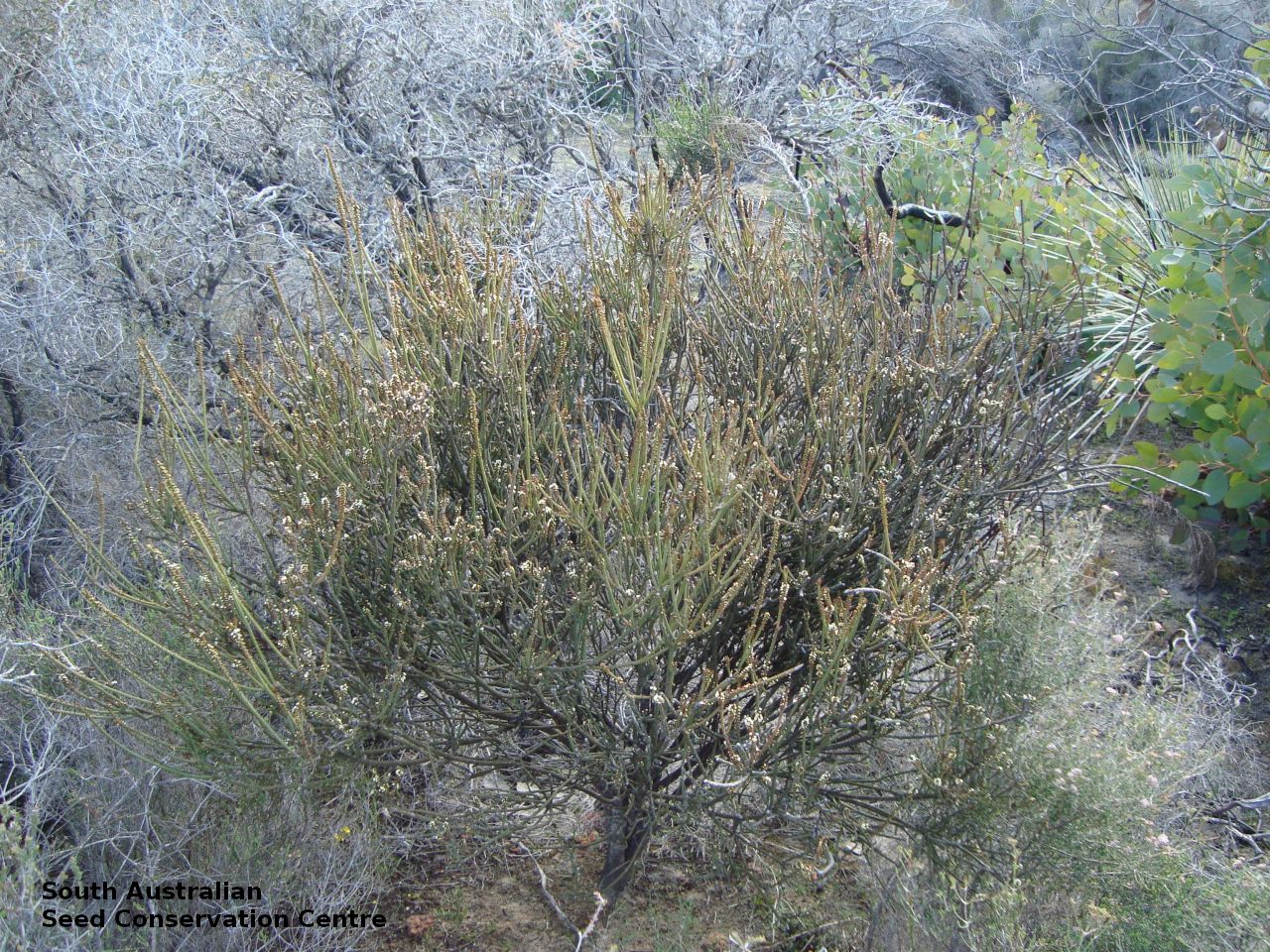
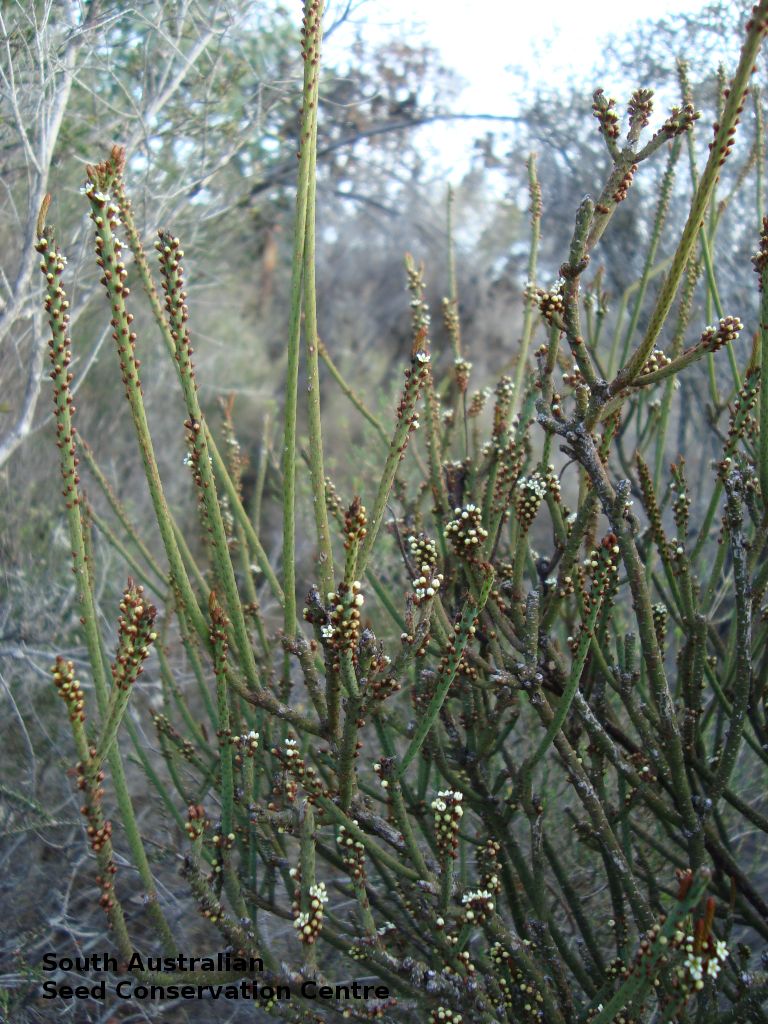
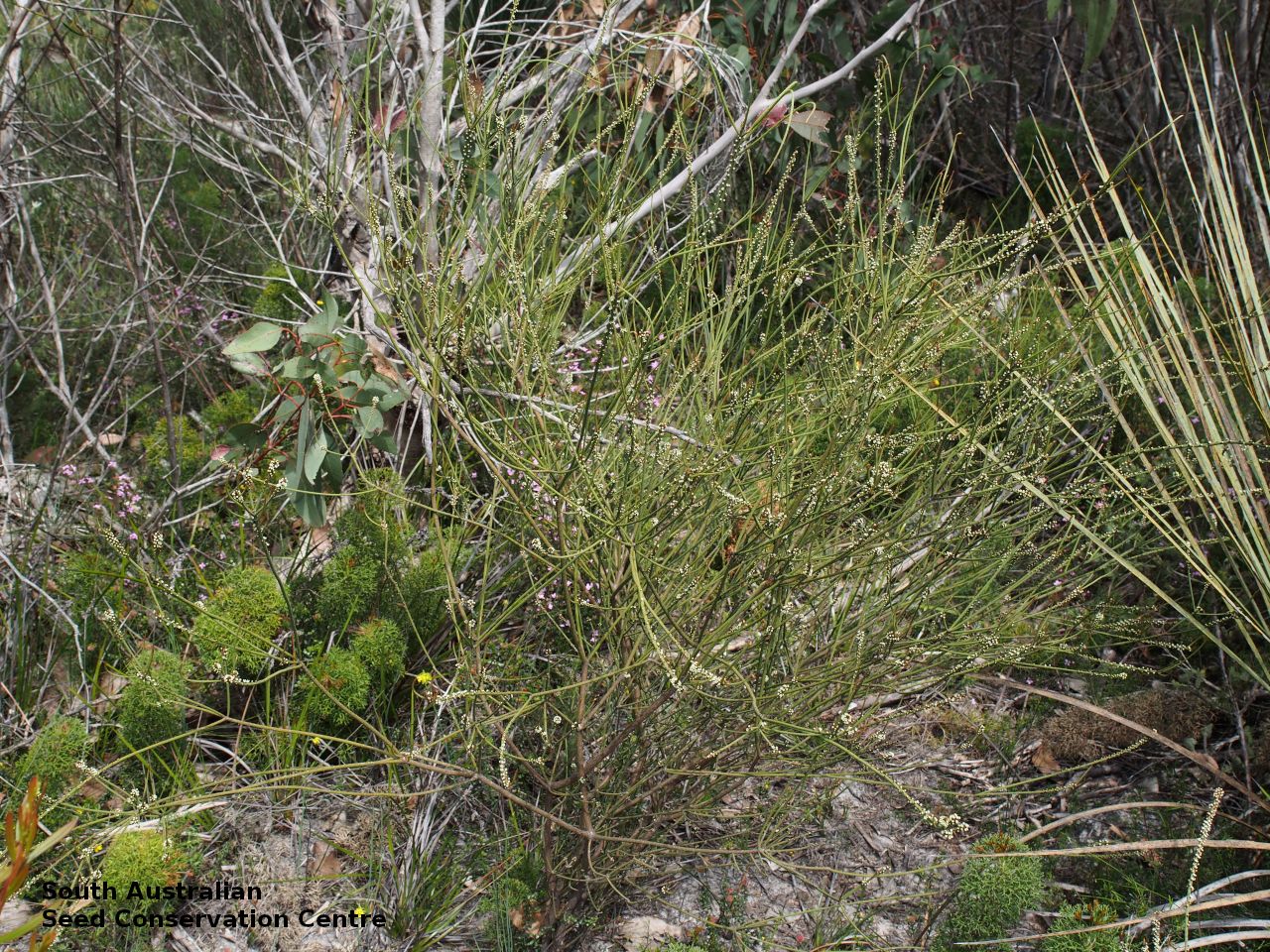
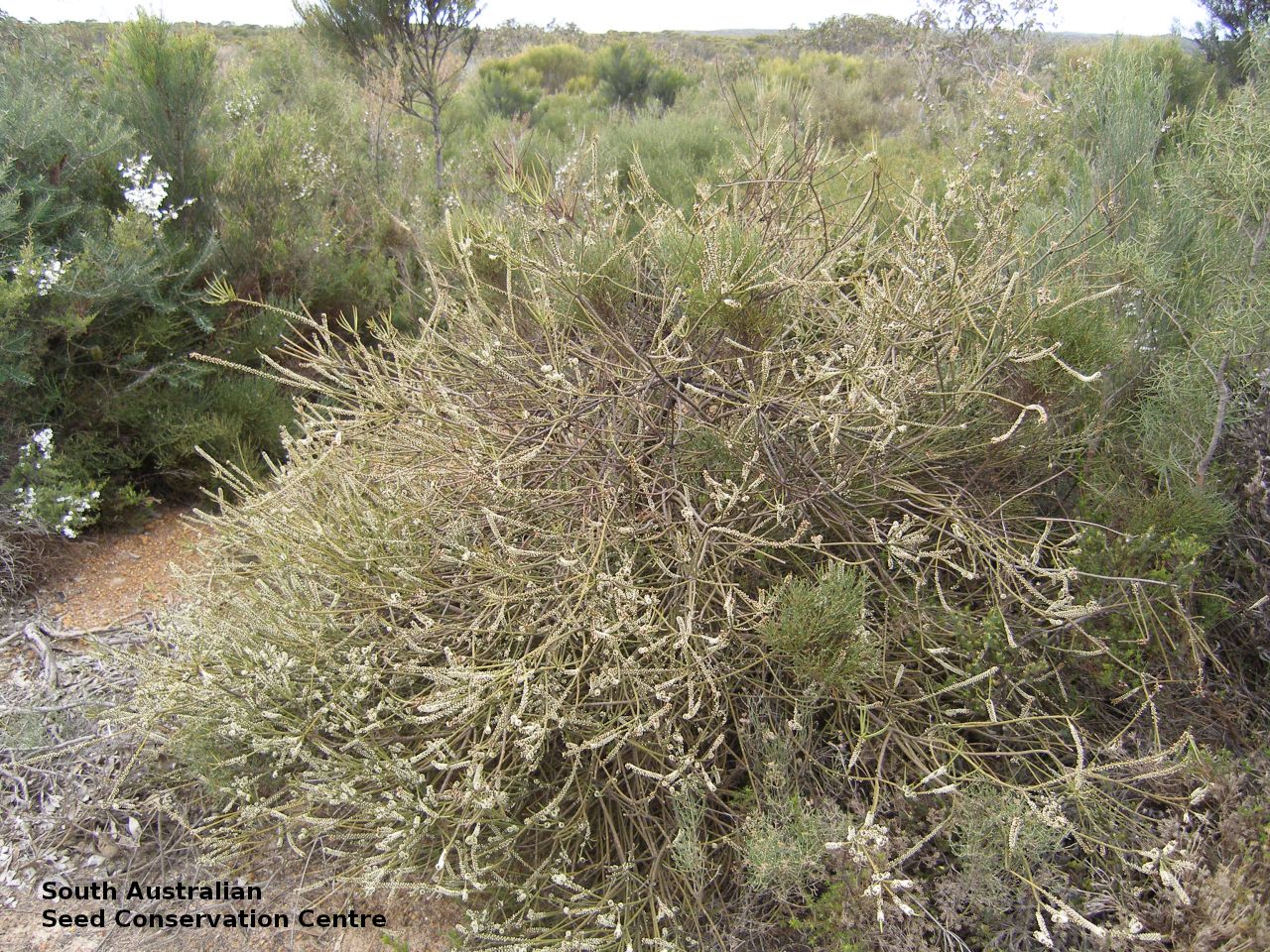
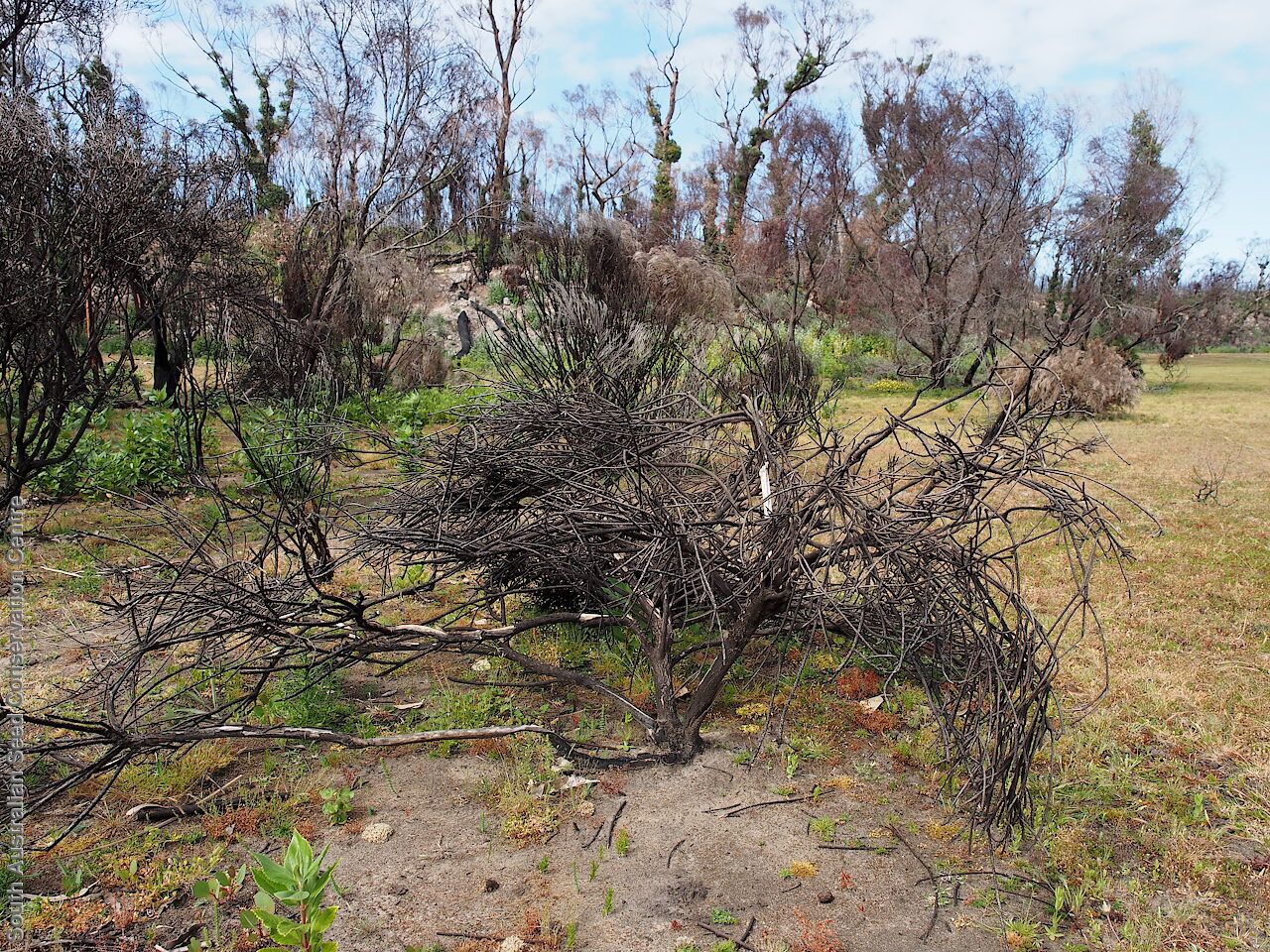
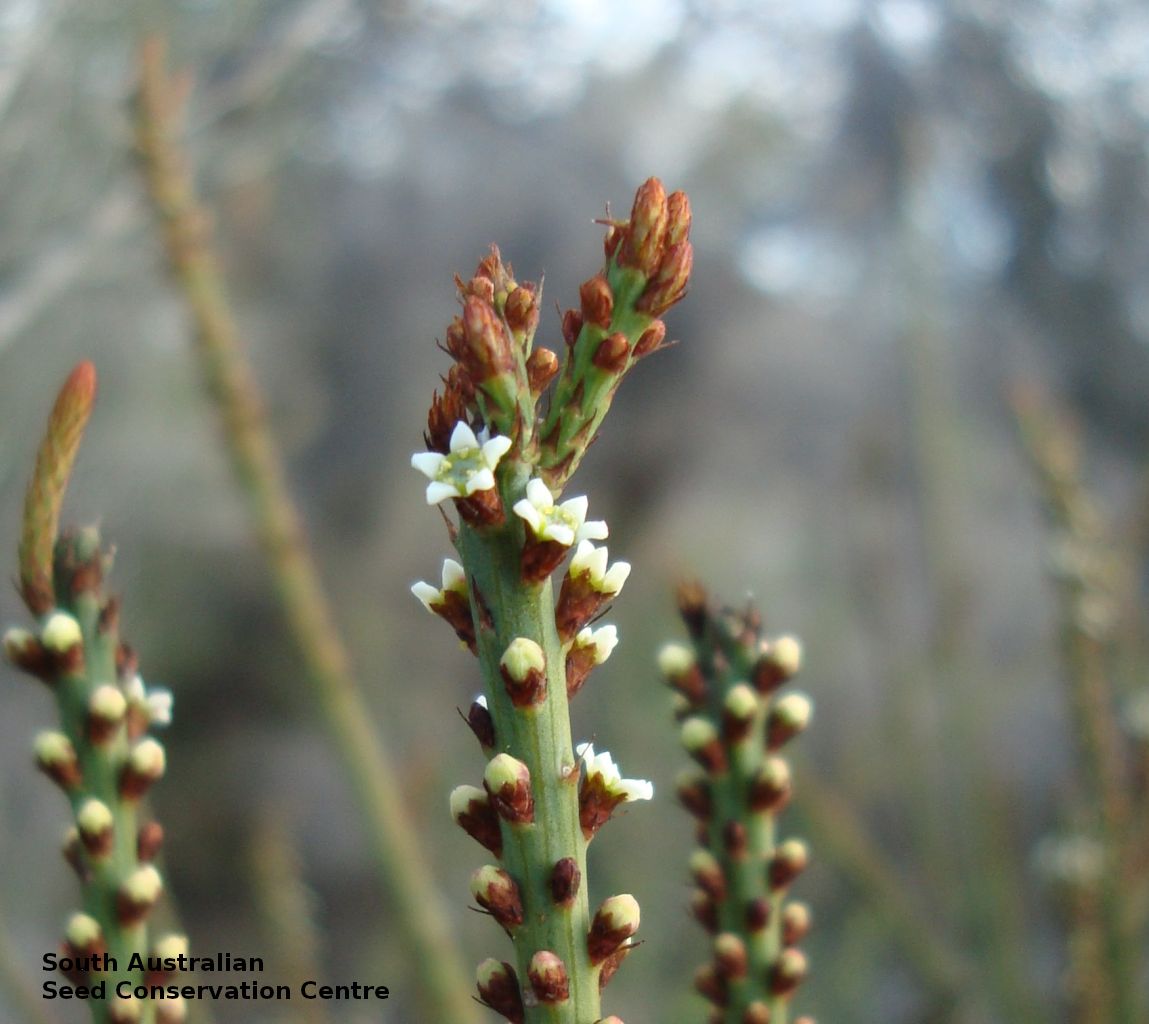
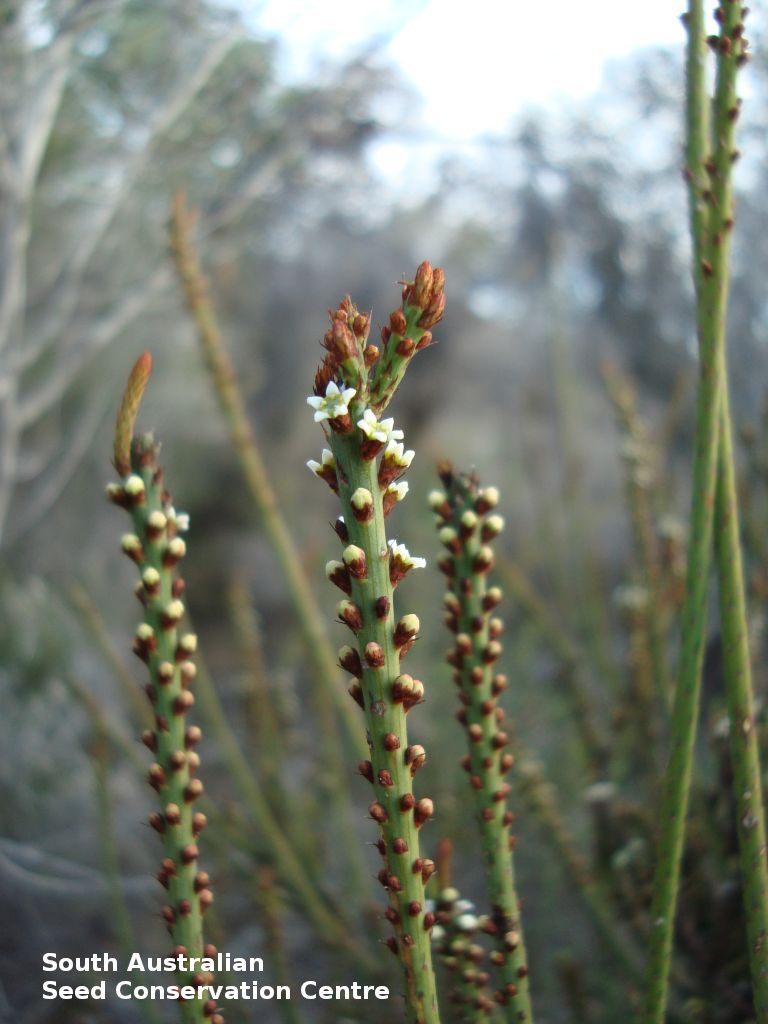
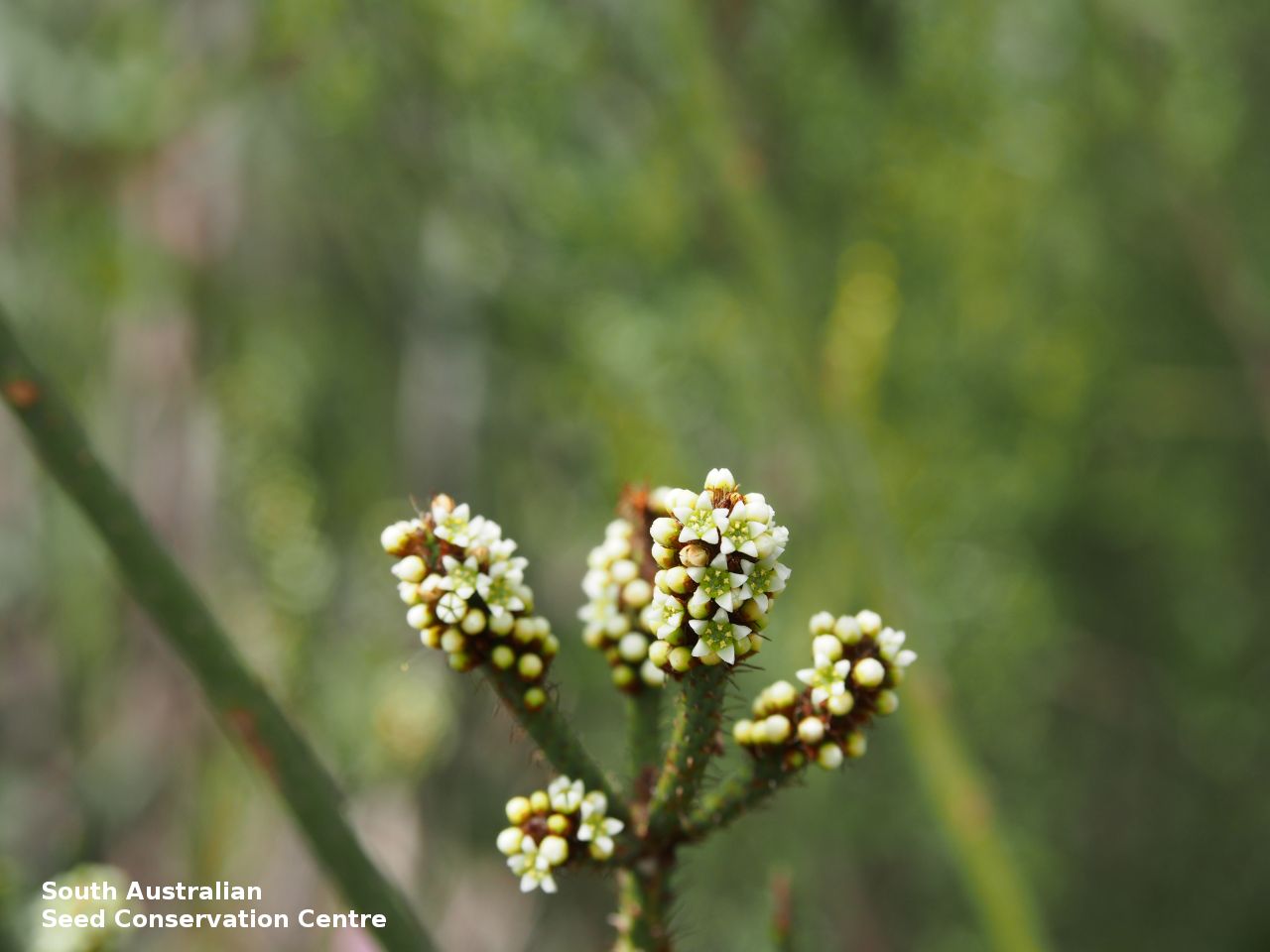
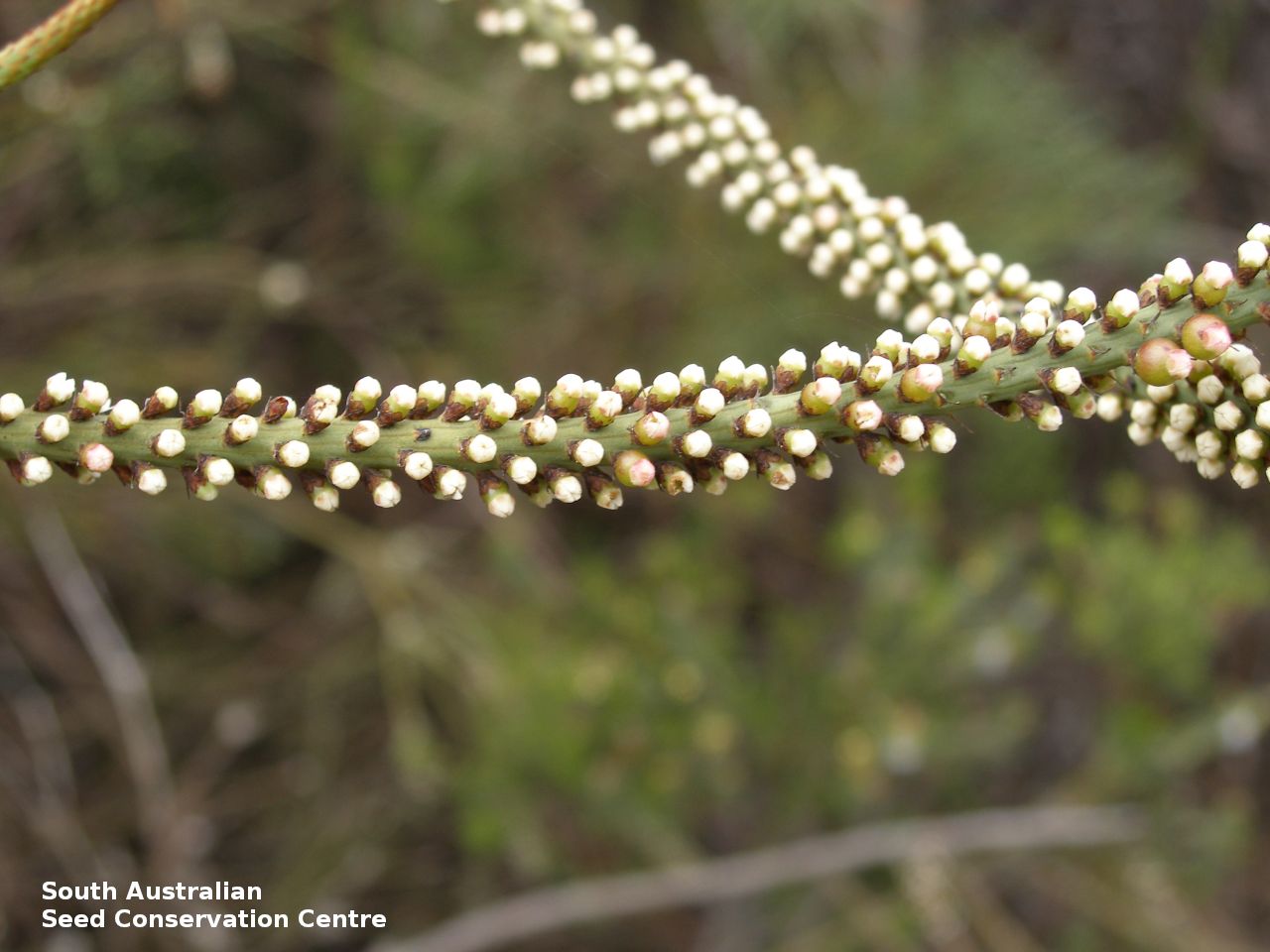
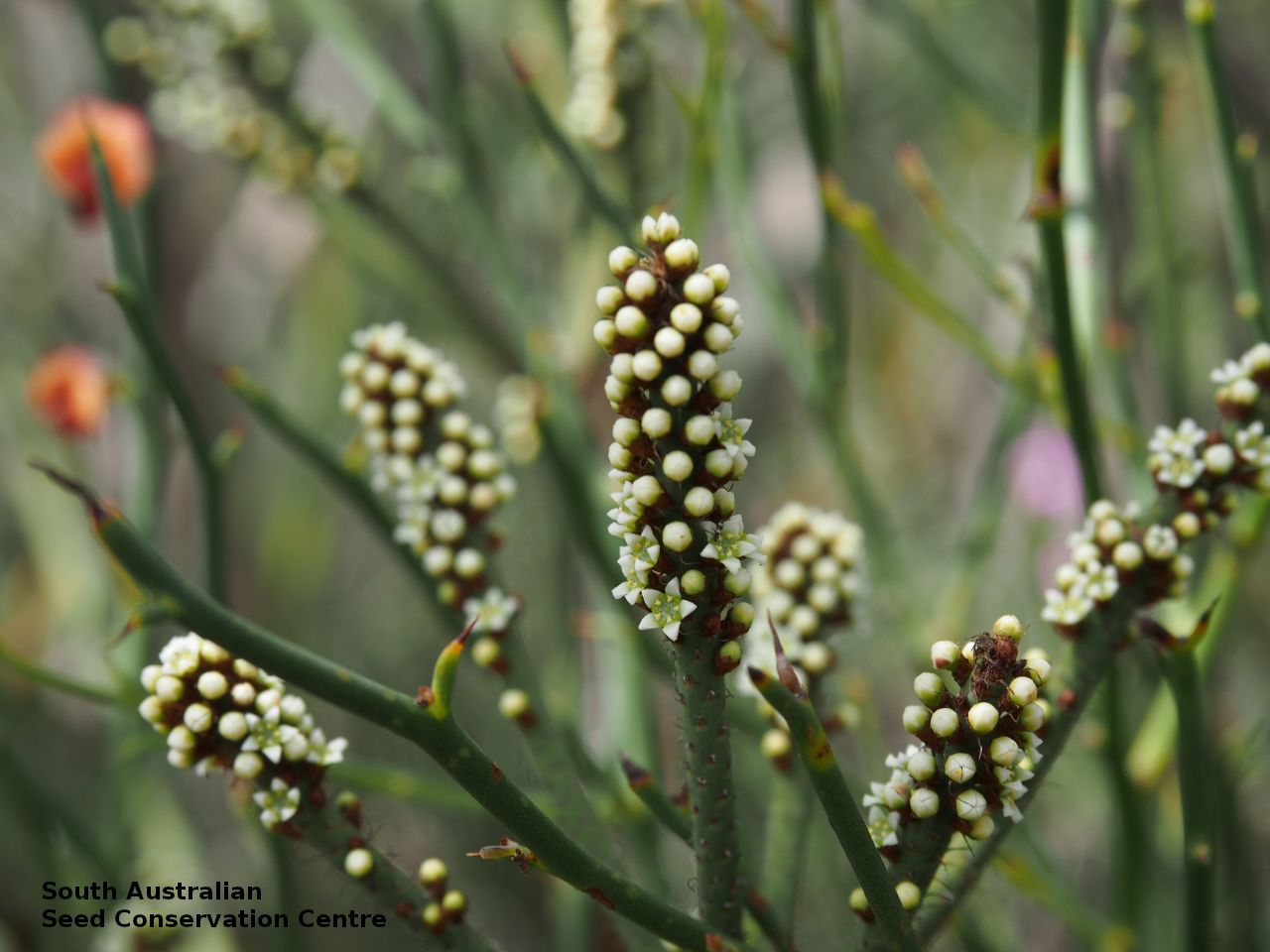
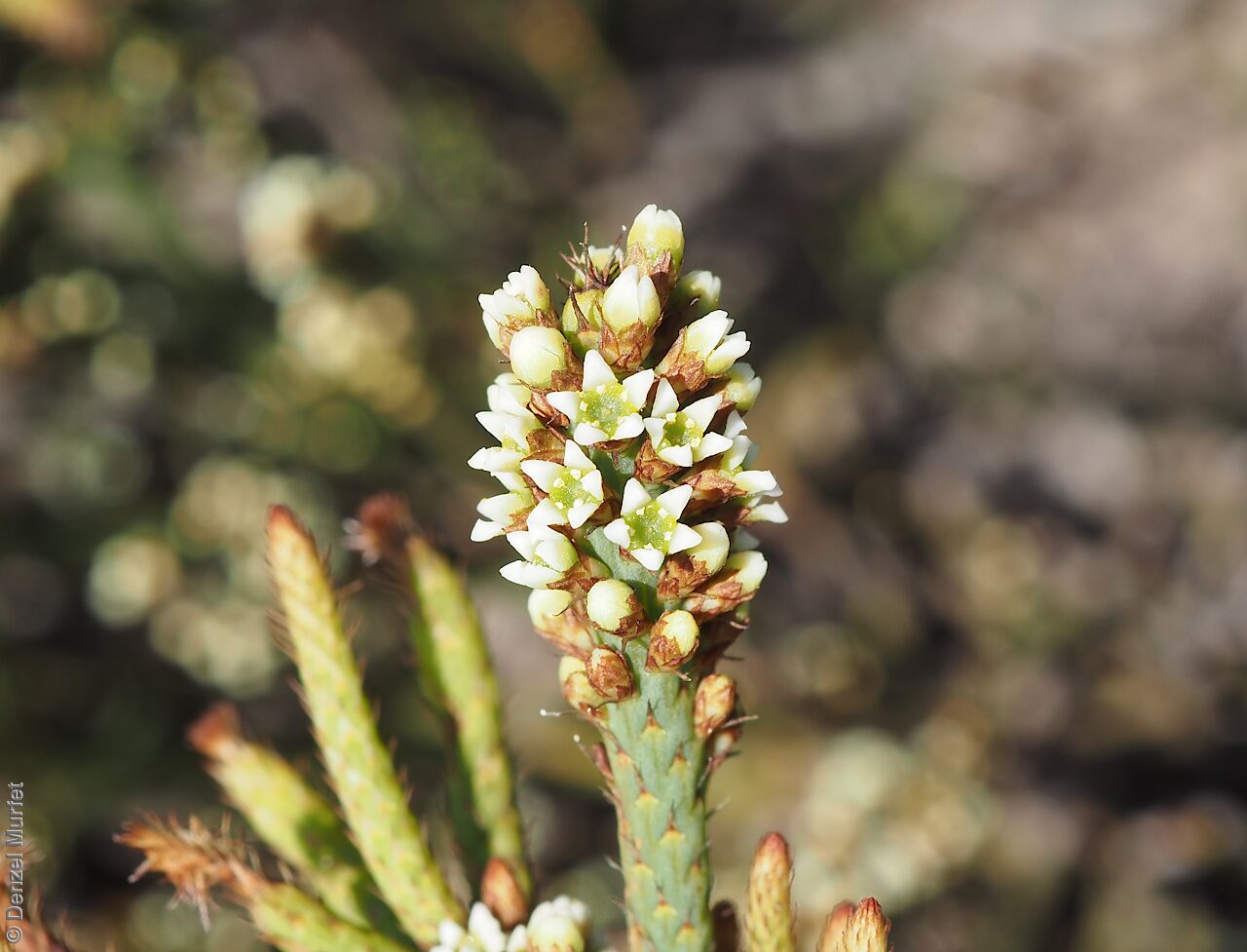
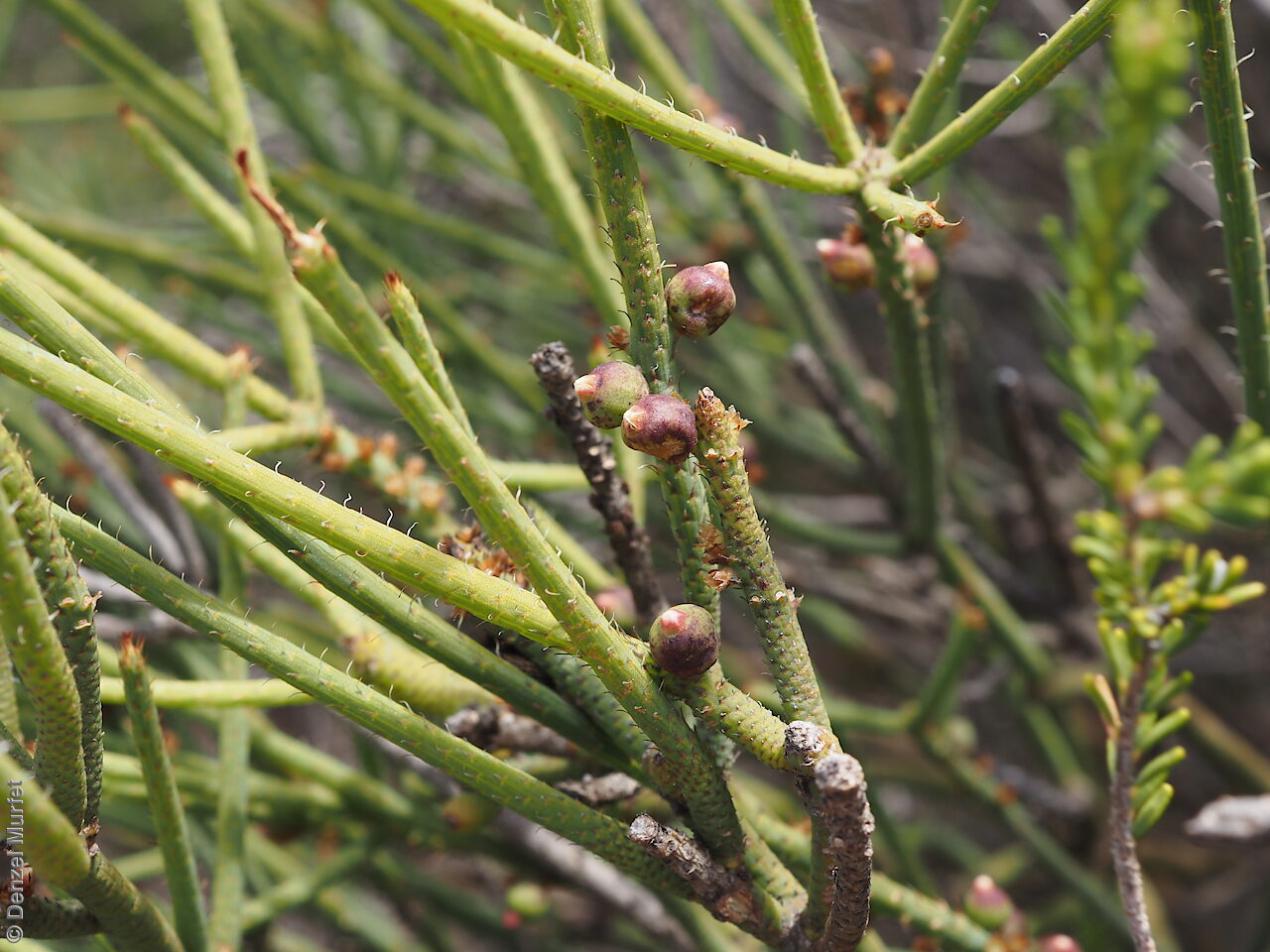
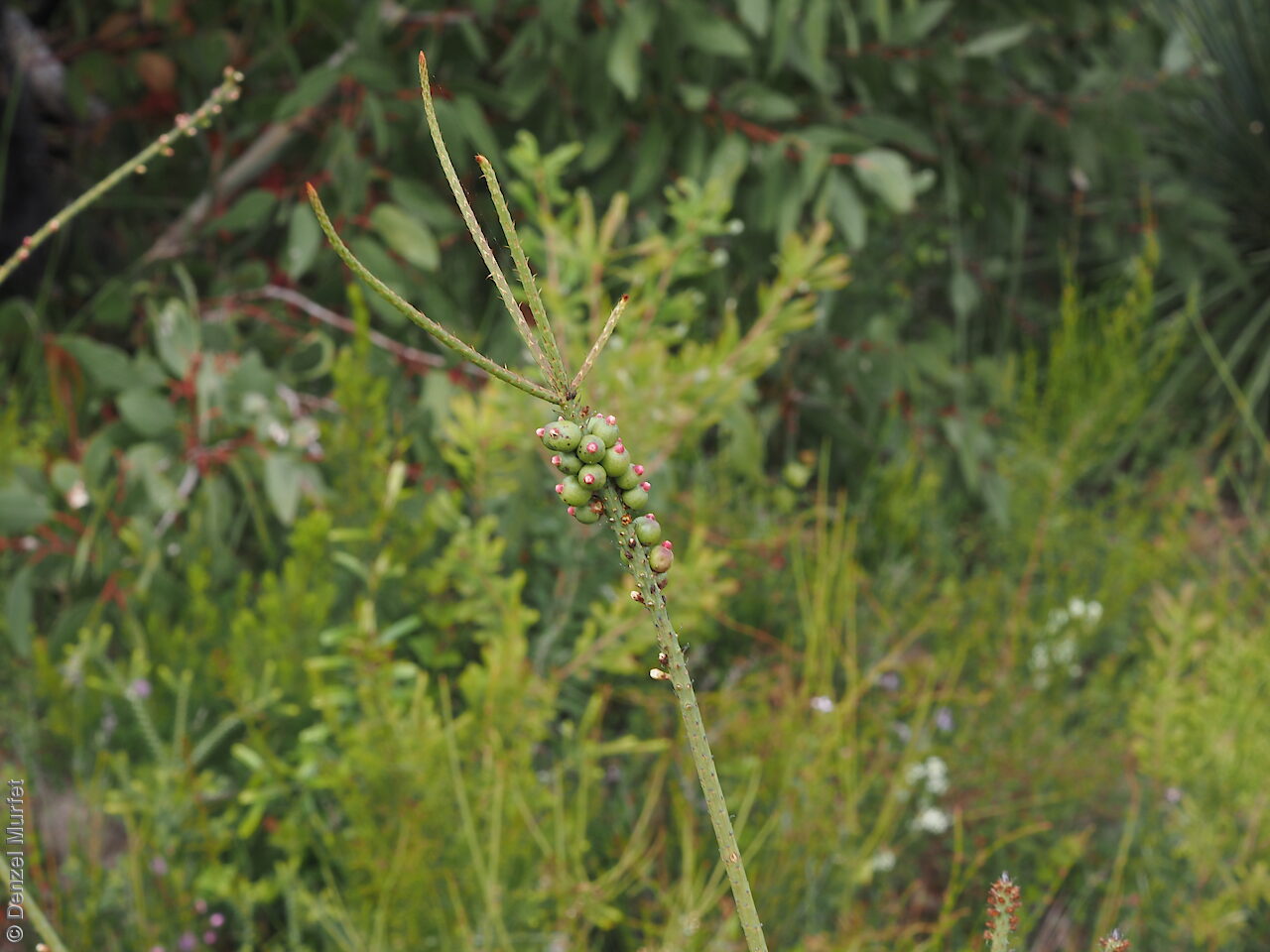
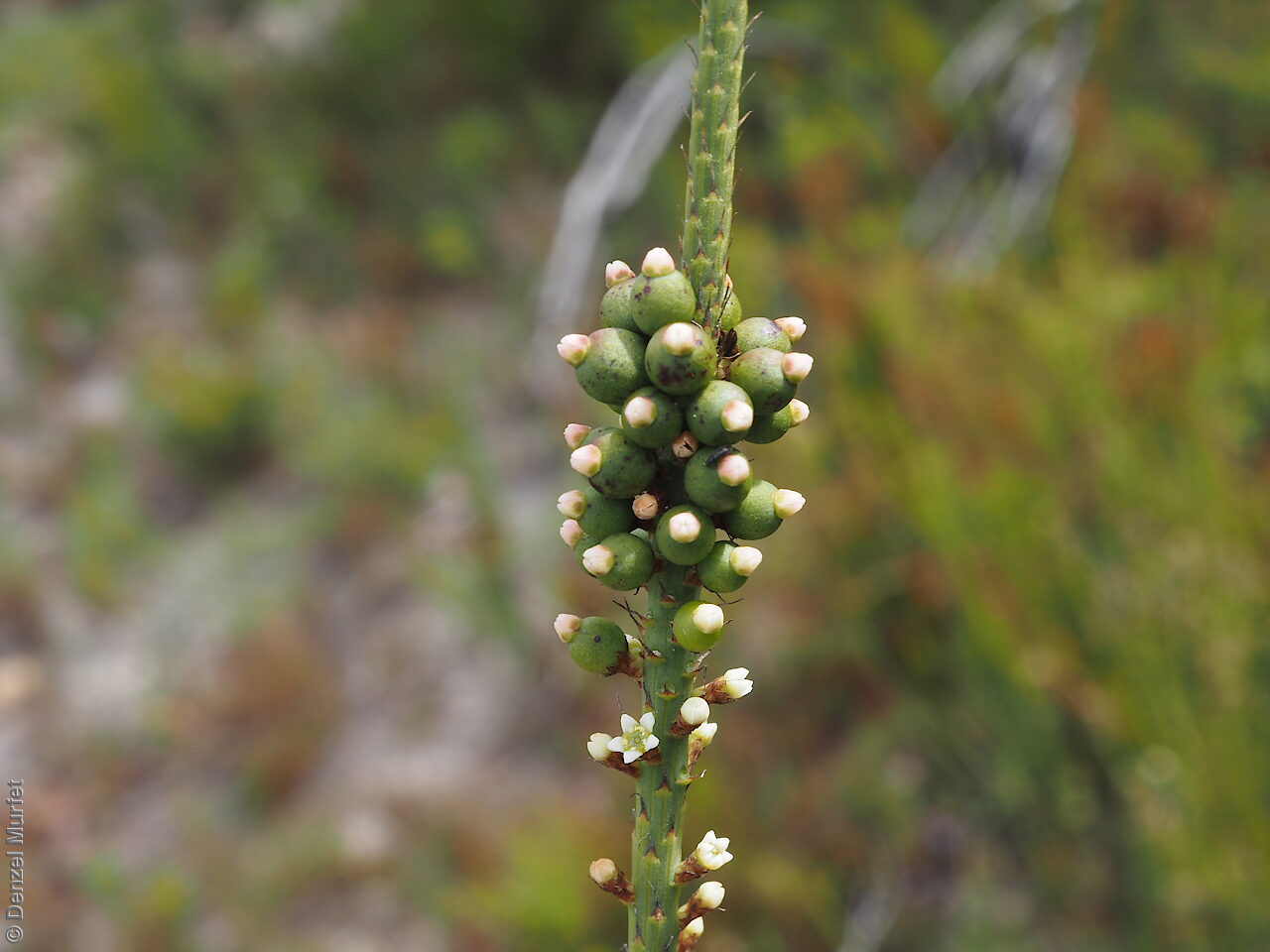
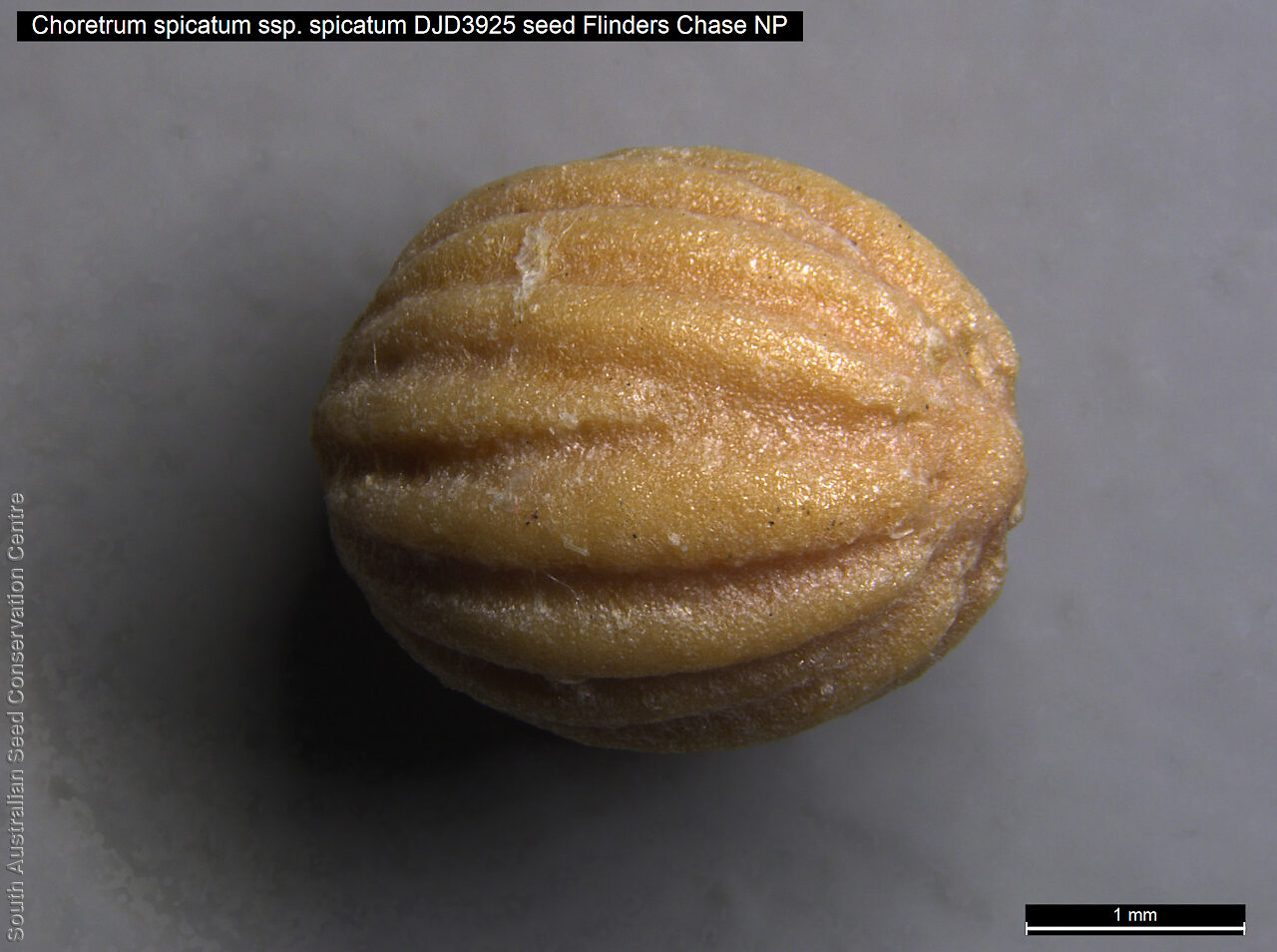
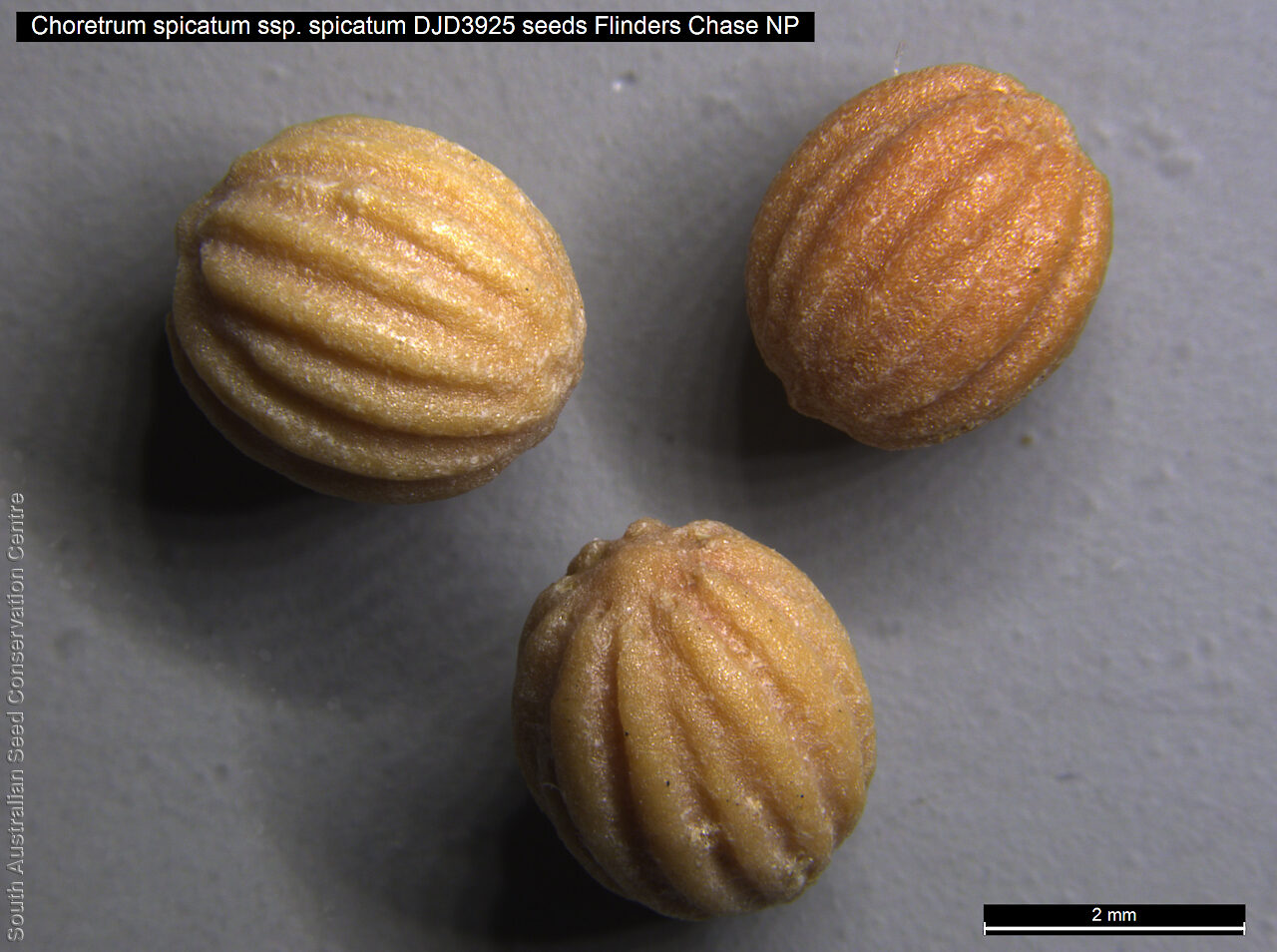
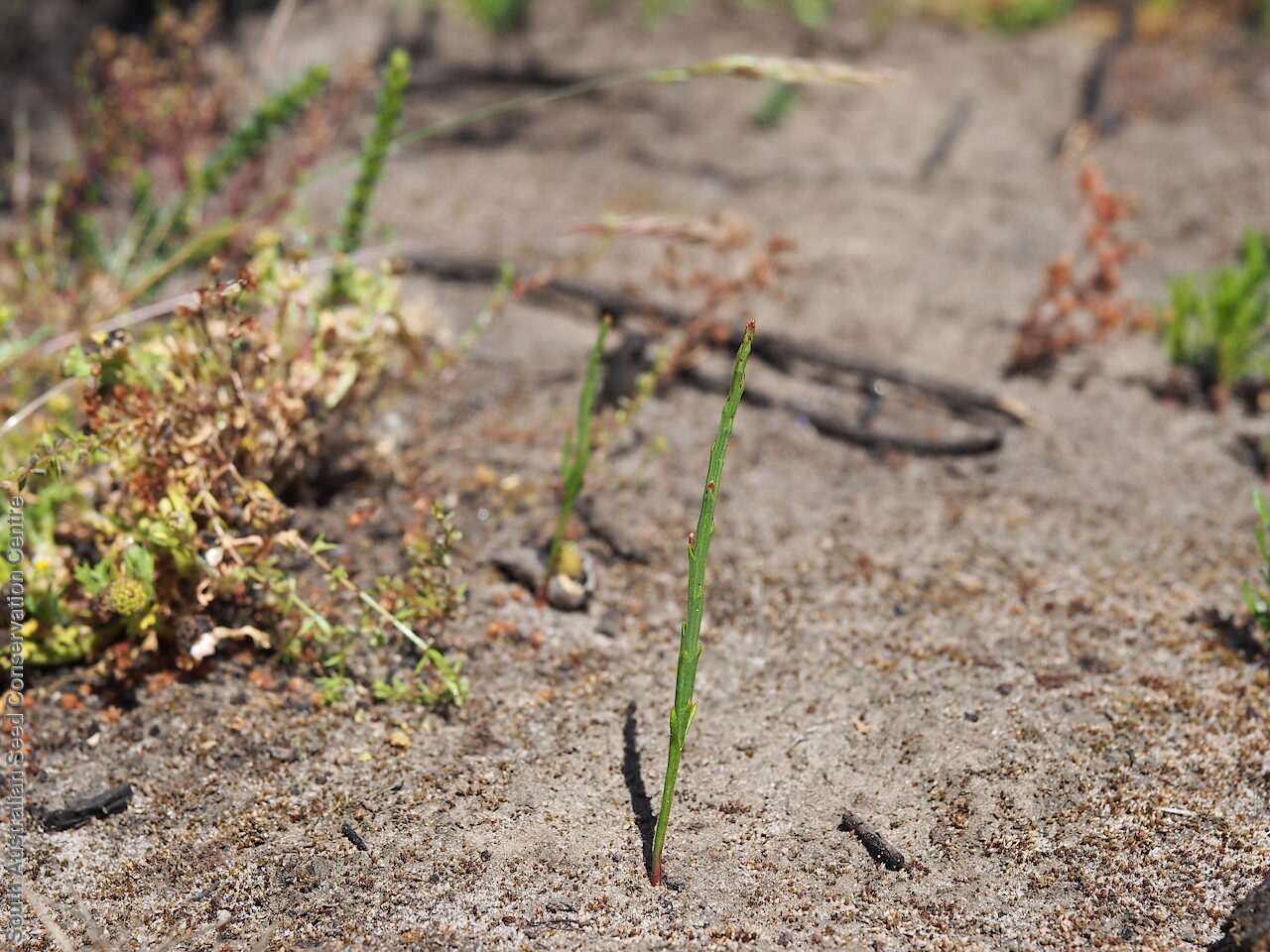
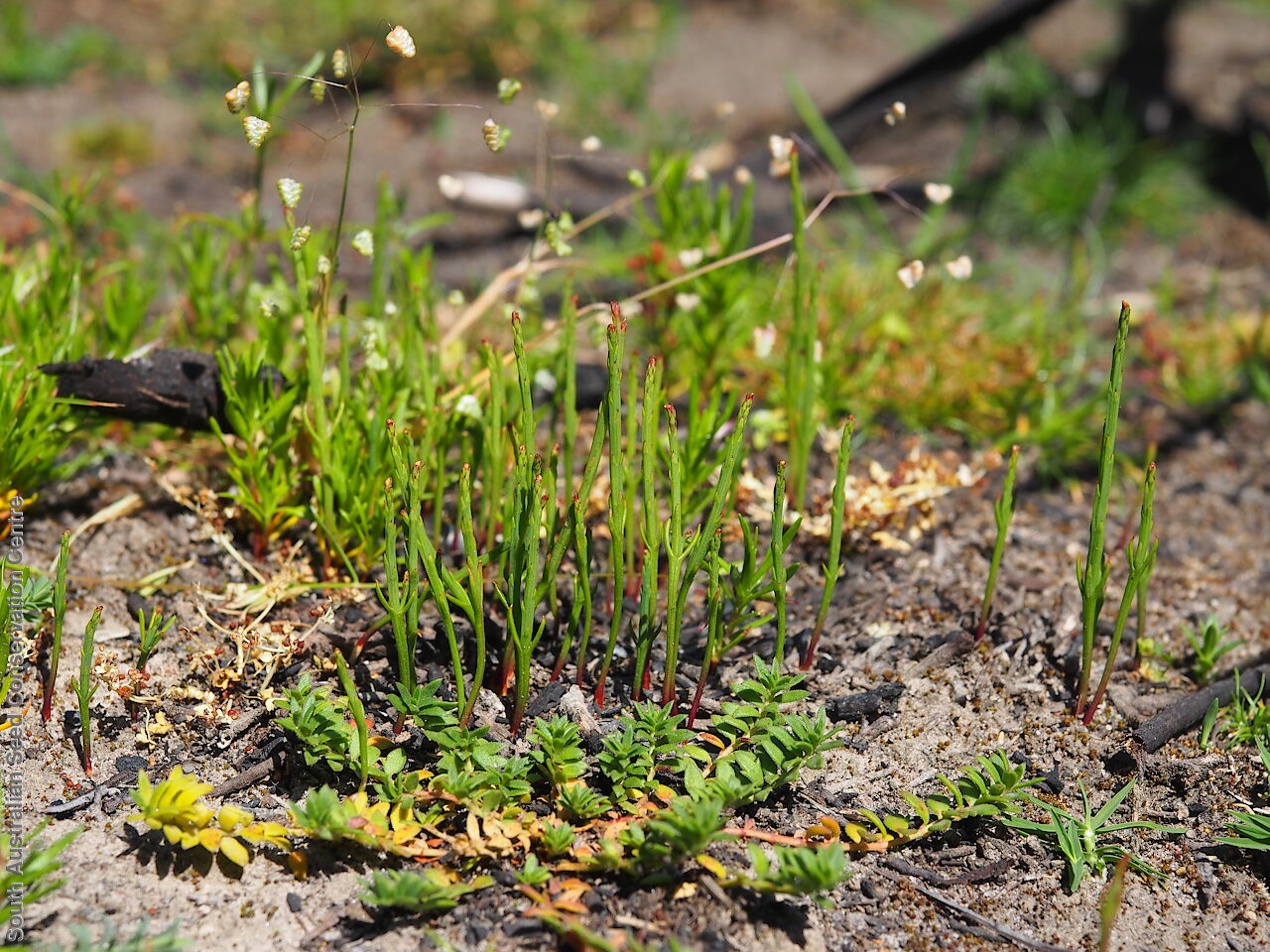
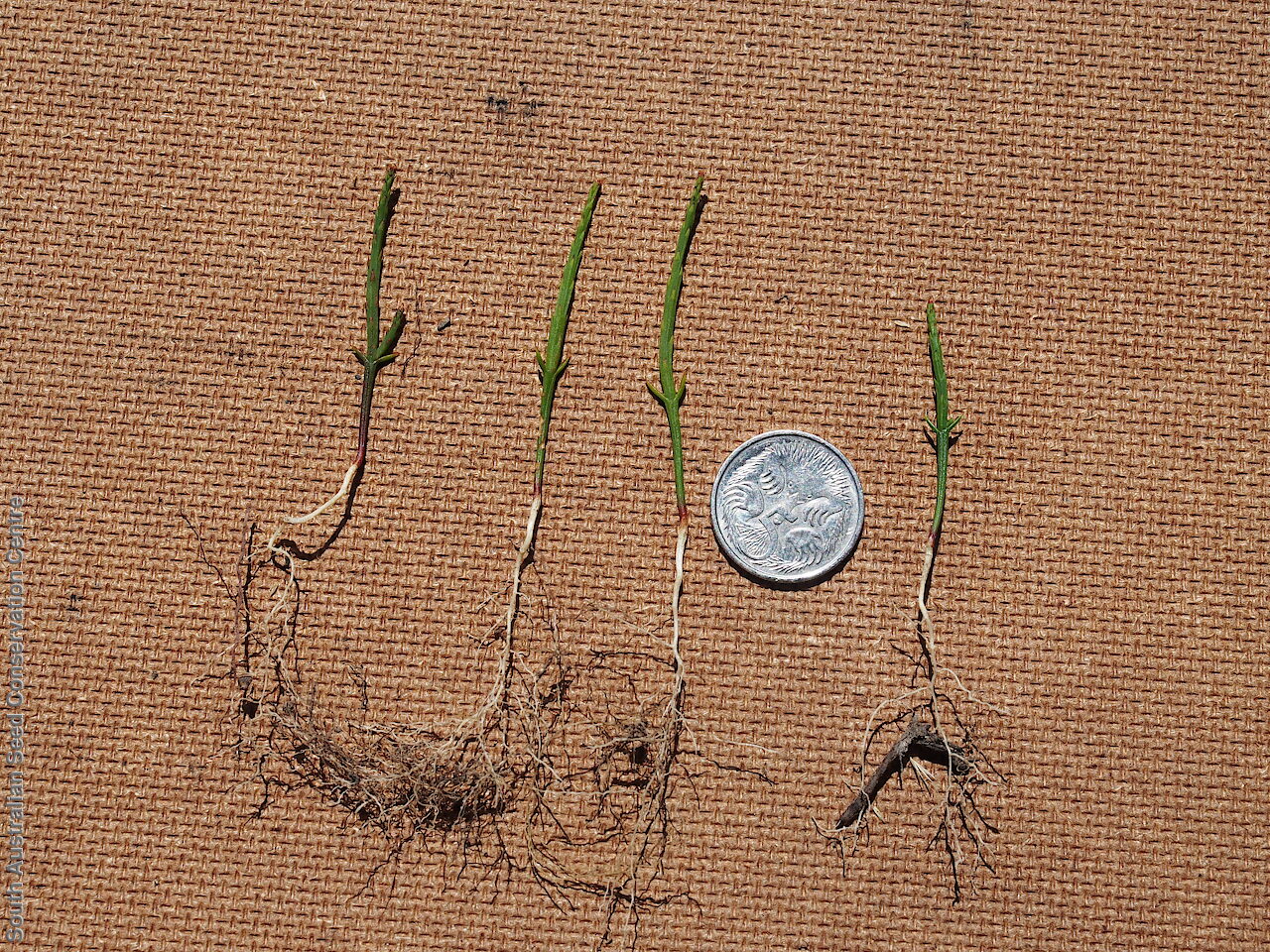
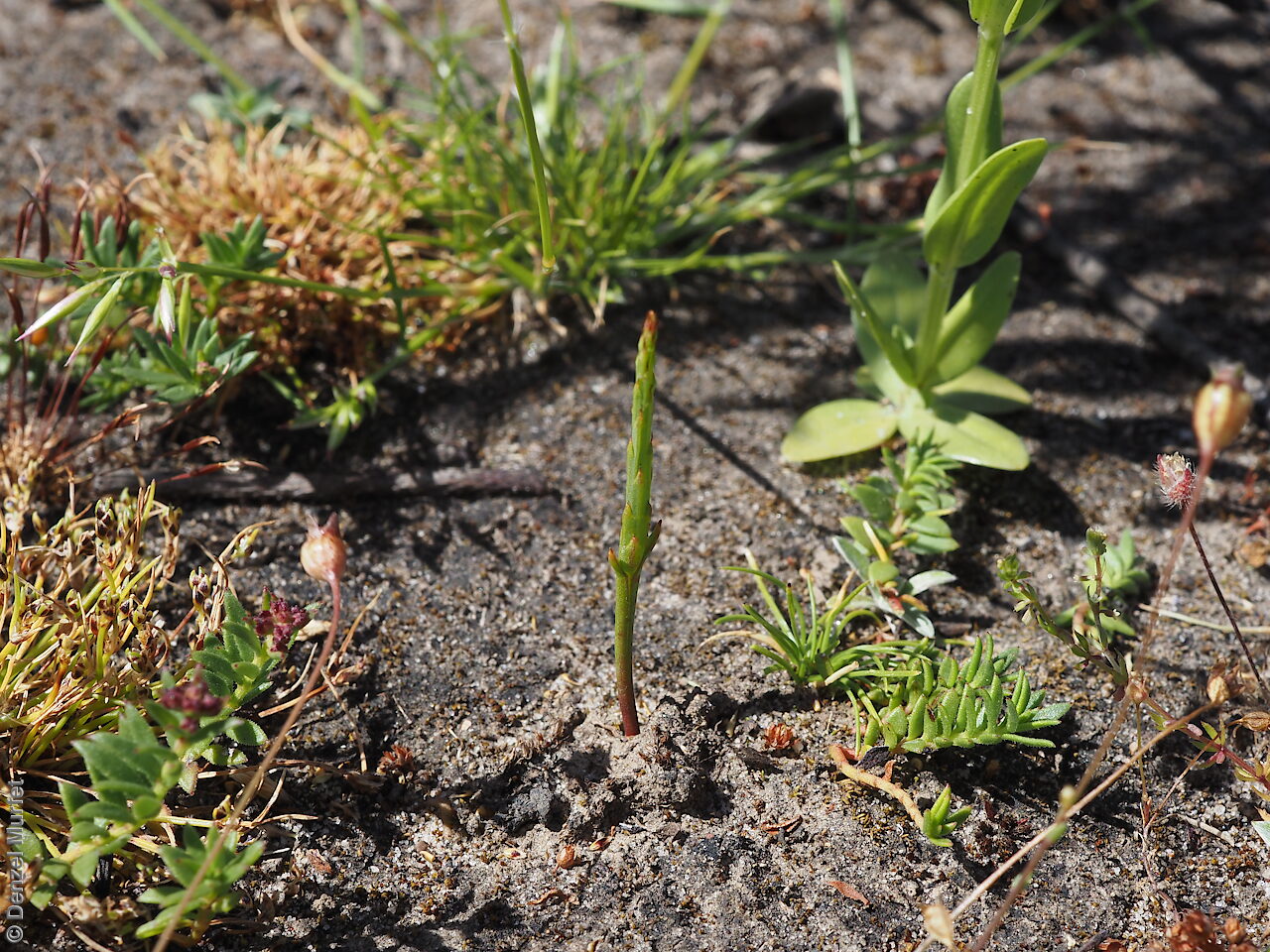
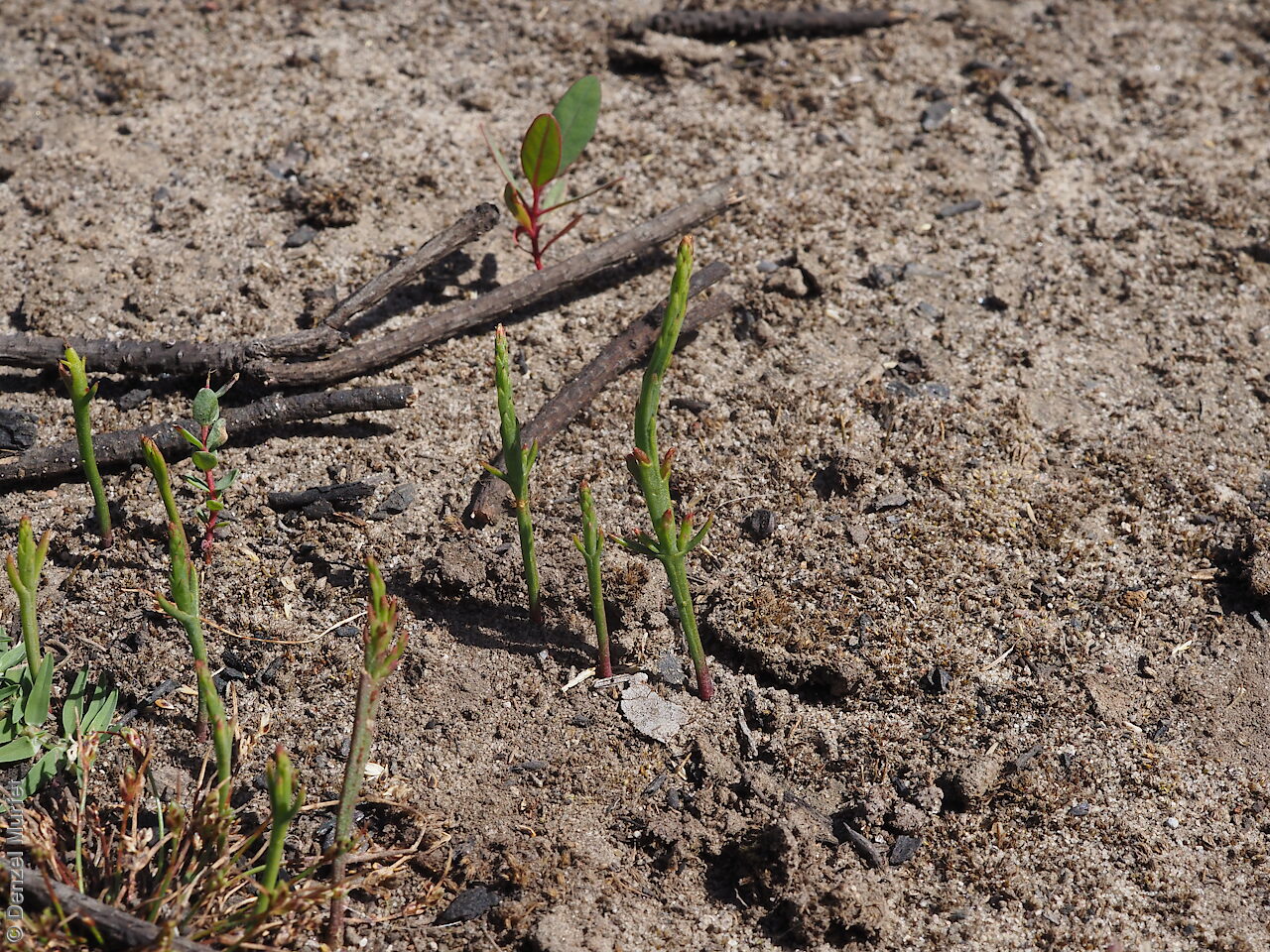

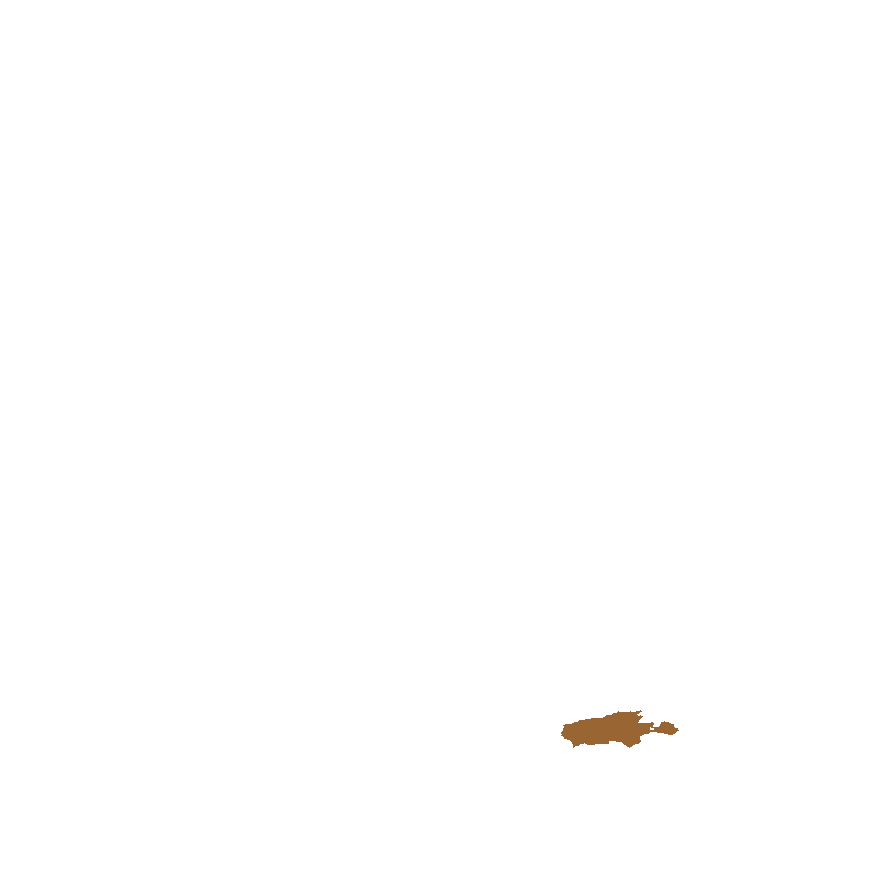
Botanical art
Prior names
Choretrum spicatum, partly
Common names
Kangaroo Island Spiked Sour-bush
Spiked Sour-bush
Etymology
Choretrum from the Greek 'choris' meaning separate and 'etron' meaning abdomen, referring to a rim that separates the top of the flower stalk from the flower itself. Spicatum from the Latin 'spica' meaning a spike, alluding to the flowers forming along a spike.
Distribution and status
Endemic to South Australia and restricted to the western end of Kangaroo Island, growing mainly in heath on sandy laterite soils, often associated with winter inundated flats and shallow open gullies adjacent creeks. Native. Rare in South Australia.
Herbarium region: Kangaroo Island
NRM region: Kangaroo Island
AVH map: SA distribution map (external link)
Plant description
An erect semi-parastic perennial, green shrub to 1.5 m high with rigid and woody branches, terete, longitudinally ridged. Leaves persistent, scale-like, sessile; spreading-ascending to spreading or recurved. Inflorescence of single peduncle bearing many flowers. Flowers white. Fruits are green-brown globose fleshy drupe to 5 mm long, with longitudinal ribs Seeds are woody globular seed to 4 mm long and 3 mm wide, with deep vertical striation. Seed embryo type is linear under-developed.
Seed collection and propagation
Collect seeds between December and March. Collect drupes that are maturing; the skin softens as it ripens. Either collect the drupes from the bushes or collect ripe fruits that have fallen off the plant onto the ground beneath the bushes. Place the drupes in a bucket of water and rub the flesh off with your hands. Drain the water and wash again if required to remove all the flesh. Then spread the wet seeds on paper towel. This species is generally difficult to germinate, it has morpho-physiological dormancy and complex germination requirements.
Fire response
Re-seeder, tiny terete-stemmed seedings proximal or emerging under burnt plants. No burnt shrubs observed re-sprouting.
Longevity: <20 years
Time to first flowering: 4 years.
Recovery work
In 2020 this species was assessed in the first year post-fire. A total of 1,300 seeds were collected from a small population in unburnt remnant vegetation. Germination screening testing fire cues will be undertaken in 2021. This project work is supported by the Australian Government through the Wildlife & Habitat Bushfire Recovery program.
| Location | No. of seeds (weight grams) | Number of plants | Date collected | Collection number Collection location | Date stored | % Viability | Storage temperature |
|---|---|---|---|---|---|---|---|
| BGA | 152 (1.72 g) | 7 | 16-May-2017 | MH37 Kangaroo Island | 30-Jun-2018 | 30% | -18°C |
| BGA | 530 (6.73 g) | 16-May-2017 | MH38 Kangaroo Island | 30-Jun-2018 | 46% | -18°C | |
| BGA | 138 (1.06 g) | 20 | 24-May-2017 | MH39 Kangaroo Island | 30-Jun-2018 | 20% | -18°C |
| BGA | 1,300 (15.300 g) | 10 | 10-Dec-2020 | Flinders Chase Kangaroo Island | 28-Jun-2021 | 84% | -18°C |
| BGA | 2,500 (35.370 g) | 1-Jan-2022 | JRG846 Kangaroo Island | 7-Jul-2022 | 59% | -18°C |
Number of plants: This is the number of plants from which the seeds were collected.
Collection location: The Herbarium of South Australia's region name.
% Viability: Percentage of filled healthy seeds determined by a cut test or x-ray.